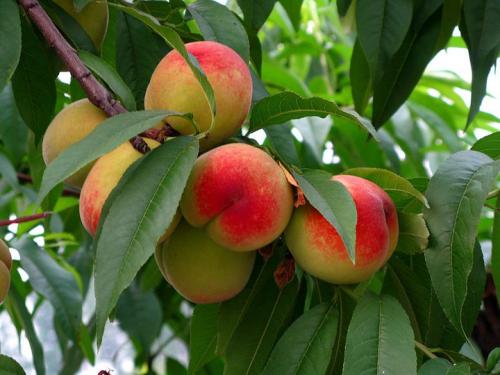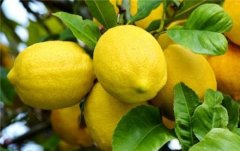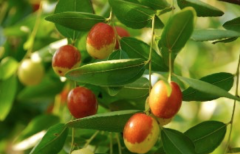Introduction of new peach varieties Tainong 9 Hongjin, Tainong 9 Hongjin honey peach variety characteristics and taste
Peach is one of the more common fruits in our daily life, its variety is also more, peach tree grafting technology is also relatively simple, so many people plant, today to introduce a new variety of peach!
Peach is an important fruit tree of Rosaceae, and it is also the sixth largest fruit tree industry in the world, second to oranges, grapes, bananas, apples and pears. Although Taiwan has a tropical and subtropical climate, the Agricultural Experimental Institute of the Council of Agriculture has preserved more than 100 low-altitude peach varieties (lines), covering rich genetic diversity. Making use of these rich provenances, the institute has bred seven white flesh peaches with low cold demand, such as peach Tainong 1, 2, 3, 4, 6, 7, 8, and will soon launch the eighth new variety, Taotainong 9 "Hongjin". Different from the previous white meat species, yellow flesh peach varieties were introduced for the first time.
According to the Agricultural Test, peaches are nutritious. Every 100 grams of white-fleshed peach pulp contains 7-15 grams of sugar, 0.2-0.9 grams of organic acids, 0.4-0.8 grams of protein, 0.1-0.5 grams of fat, and 3-5 milligrams of vitamin C and 0.2 milligrams of B2. In addition, yellow peach pulp is more rich in carotenoids, containing 850-1200 milligrams of carotenoids per 100g pulp, which is more nutritious than white peach. The institute explained that after a long period of breeding and seed selection, low-cold yellow flesh peaches were selected by hybrid offspring in the Republic of China in 1997 and named Taotainong No. 9 "Hongjin". It will be provided to interested farmers for planting, and it is believed that consumers will soon be able to buy sweet, juicy and more nutritious yellow flesh peaches on the market.
The Agricultural Test Institute further explained that the "Hongjin" peach blossoms early (in late January), requires less low temperature hours for dormancy in winter, and is suitable for planting in the north of central Taiwan, and winter is the best planting period. The "Hongjin" peach fruit is large and round in shape, with an average fruit weight of 157 grams, and its peel is evenly red when it is ripe. It is an early yellow peach variety that can be planted at low elevations in Taiwan, and can also avoid the decline in fruit quality caused by fruit fly damage peak and plum rainy season. In addition, the damage rate of "Hongjin" peach fruit during harvest and transportation is less than that of white-fleshed peach, which can improve the disadvantage of intolerant storage and transportation of peach and increase the profit of producers and sellers.

- Prev

Do you really need acidic soil to grow lemon seeds? Introduction to how to plant potted lemon
When you eat lemons, you can leave the seeds and plant them yourself. Even in cold months, a productive lemon tree can grow in your home. They are beautiful in appearance, from dark green leaves to snow-white flowers, they also exude pleasure
- Next

What are the advantages of Taiwan jujube seedling variety Tainong 13 Shirley and Shirley jujube seedlings? do they taste good?
Do you like eating dates? Generally speaking, when the jujube is ripe, the sales volume of the jujube on the market is relatively good, so we prefer a fruit for the jujube. Let's take a look at its new variety. Fengshan Tropical Garden of Agricultural Experimental Institute
Related
- The first cup of black tea in spring, the flavor and history of tea gardens in Kenya, Africa
- The computer can not only choose potatoes, but also grow tea rice. AI will grow winter oolong tea champion.
- It is not only the inflated tea bitten by insects, but also engraved with the four seasons tea in Beipu.
- The Oriental Beauty Tea Festival in Zhuxian County takes the stage at the weekend to experience the plus-size feast of oil tea.
- & quot; Oriental Beauty Tea & Exploration of Emei in Hsinchu, the hometown of quot;
- The new variety of strawberry "Tainong 1" dessert is the first choice with mellow aroma. Crimson gorgeous
- History of Tea in Taiwan: from Wild Inner Mountain to Export Tea Garden
- Two types of Taiwan Oriental Beauty Black Tea won the British three-Star Award for Childhood Tea Xiang Zhang Jiaqi changed from pilot to champion tea maker.
- Banana species and varieties: the planting history of Taiwan Xianren banana and dwarf banana is long, is banana disease resistant?
- Coffee planting Technology: Qianjie Coffee from Seedling to harvesting

